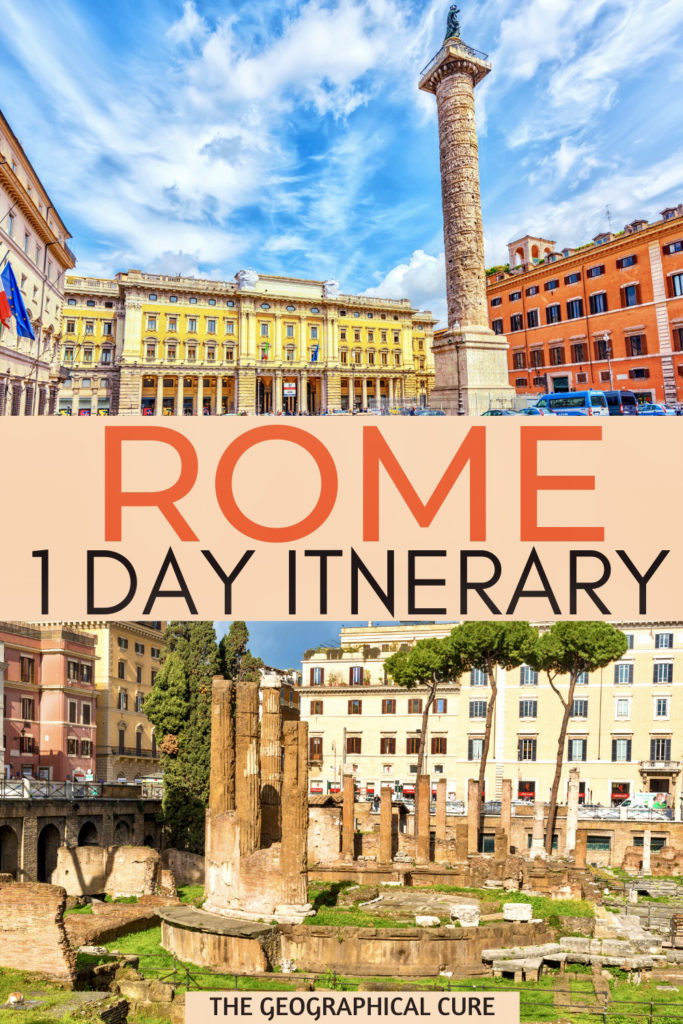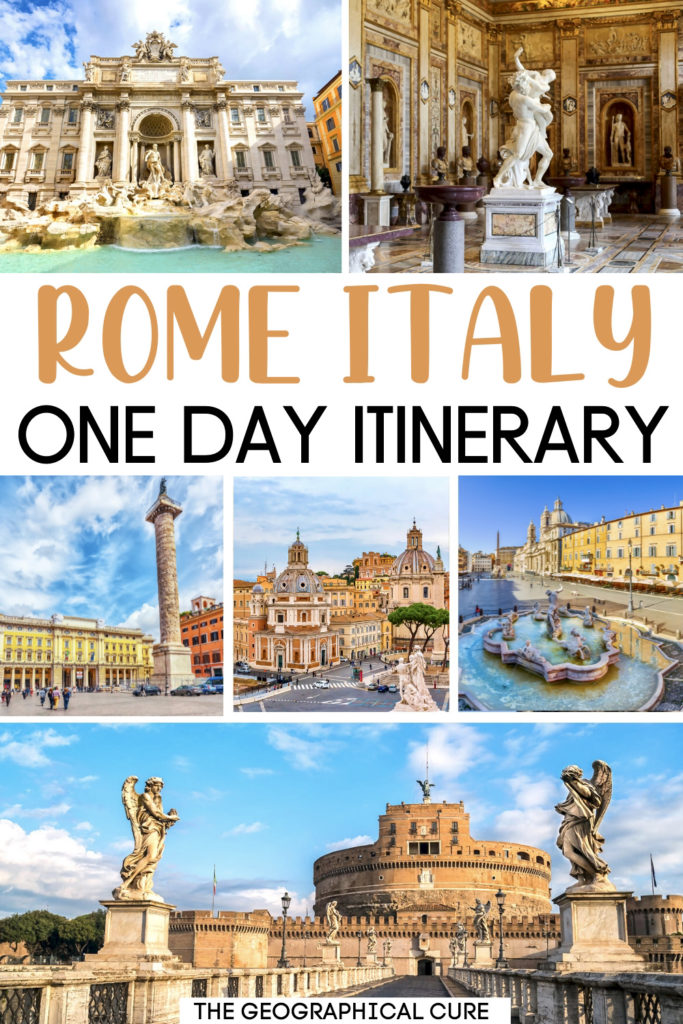Endlessly inspiring and ethereal, Rome is the magical mecca of carbs and ancient architecture. It’s a grand showcase of Western civilization, full of Imperial pomp and circumstance.
Rome has spent several milennia accumulating layers of beauty, history, and romance — just waiting for its admirers to arrive.
Ideally, you should visit Rome for a full week. Still, I know that’s not always possible, and you might only have a short amount of time to see Rome.
If that’s the case, know that you won’t be able to see everything in Rome in one day and don’t try.
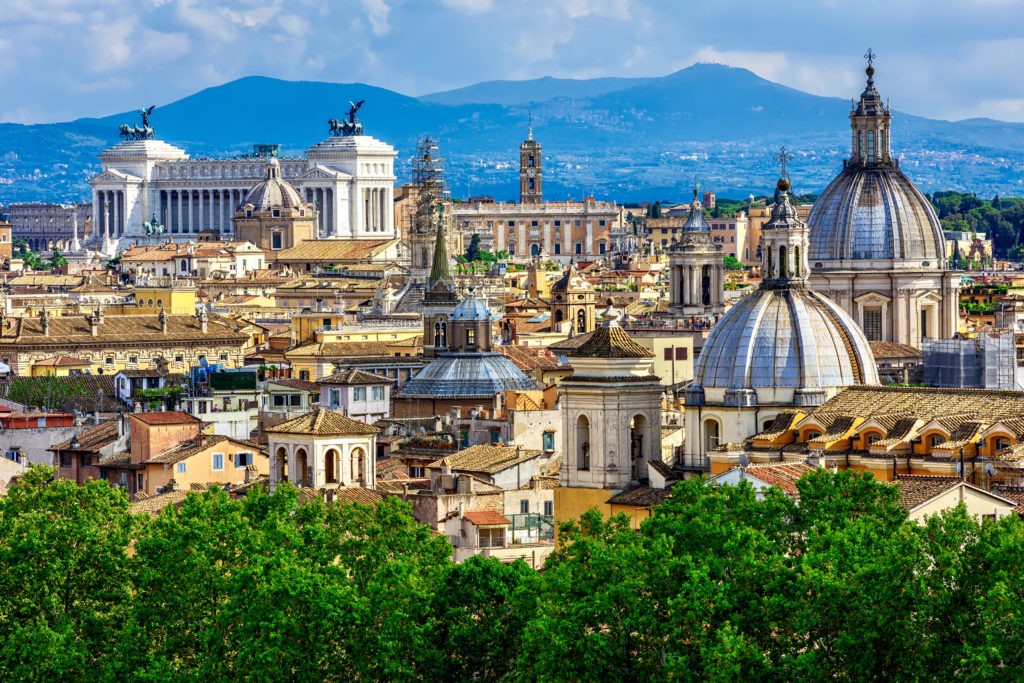
Instead, structure a visit to Rome based on your own individual passions and interests. With my themed one day in Rome itineraries, you can pick one part of Rome that calls to you and explore it well.
You can choose what you personally want to see with only 1 day in Rome — imperial ruins, historic attractions, opulent palaces, hidden gems, Vatican City masterpieces, etc. The options are nearly endless.
For organizational purposes, I’ve broken down my best one day in Rome itineraries into the following categories:
- 1 Day in Imperial Rome Itinerary
- 1 Day in Central Rome Itinerary
- 1 Day in Vatican City Itinerary
- 1 Day in Rome for Pilgrims
- 1 Day in Rome for Art Lovers
- 1 Day in Off the Beaten Path Rome
- 1 Day for Palace Lovers
- 1 Day in Rome “Gotta Do It All”
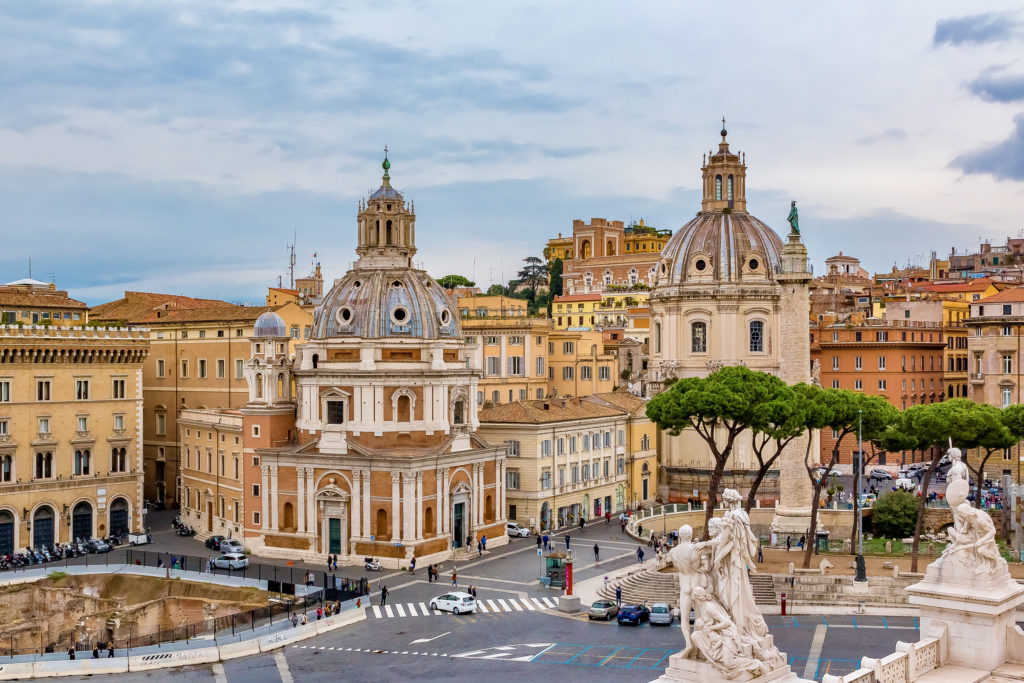
If you’ve already spent time in Rome before, these one day itineraries will give you ideas for the next time you visit Rome.
Although one day isn’t much time, Rome is still one of the most exciting days Europe has to offer. With some advance planning and ambition, you can definitely have a bucket list adventure in Rome.
To prepare for your Rome visit, you might enjoy reading these articles, for background information:
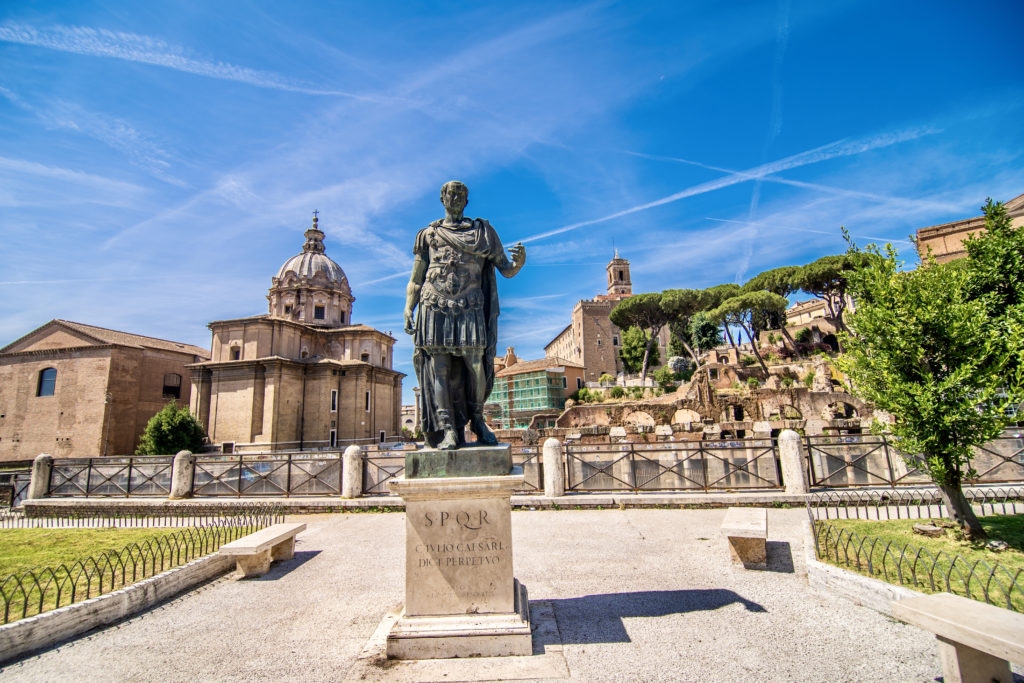
Sample One Day In Rome Itineraries
Here are my specialized itineraries for spending one perfect day in Rome.
1. One Day In Rome Itinerary: Imperial Sites
The Imperial sites are synonymous with Rome. You can easily spend day 1 day in Rome touring these iconic attractions. If you’re a history buff, this is the tour you should pick among my 1 day in Rome itineraries.
I never tire of the imperial monuments, no matter how many times I’ve visited Rome. These sites can be visited with one ticket and are Rome’s biggest draw.
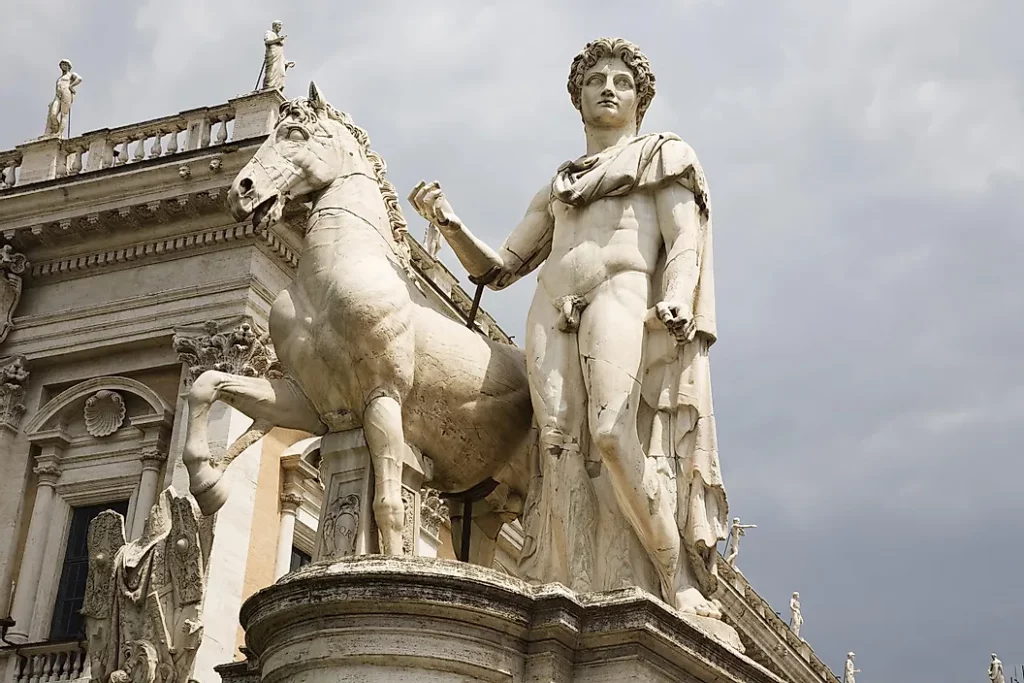
With only one day in Rome, you should probably book a guided tour to see the big three — Colosseum + Roman Forum + Palatine Hill. These tours usually last 2-3 hours.
Here are some tour options you can choose from. They all vary slightly in duration and what you see. So pick one that best suits your sightseeing agenda.
- skip the line entry tickets to all 3 sites
- tickets + a 2 hour guided tour for all 3 sites
- 3 hour guided tour and entry to all 3 sites
- tickets & tour of all 3 sites + underground Colosseum access
- 4 hour private day tour of Ancient Rome
- skip the line private guided tour with an art historian
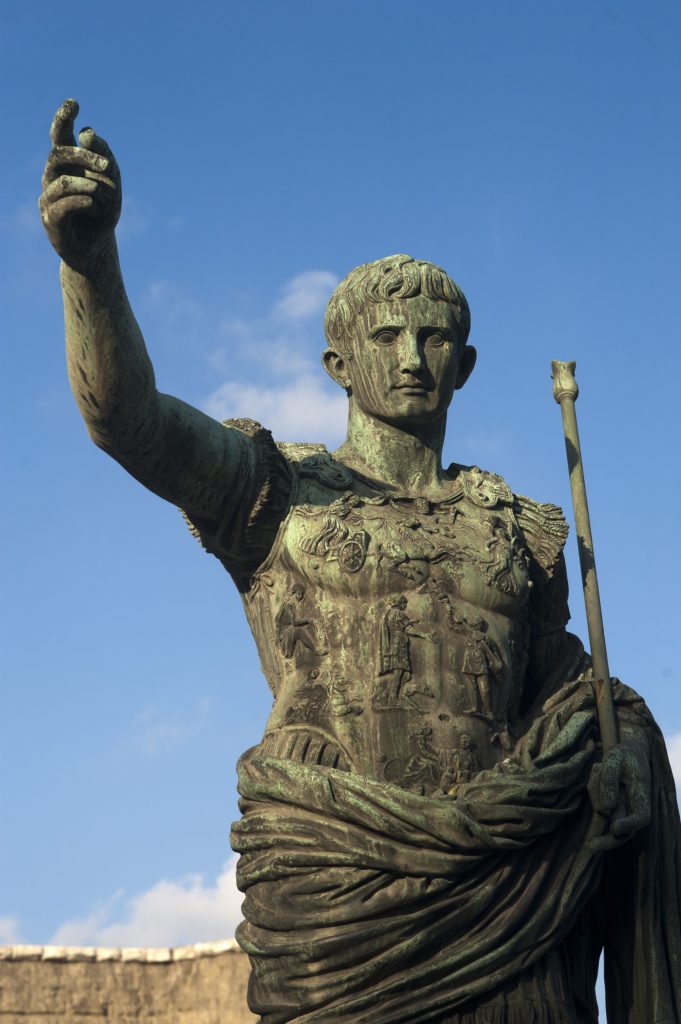
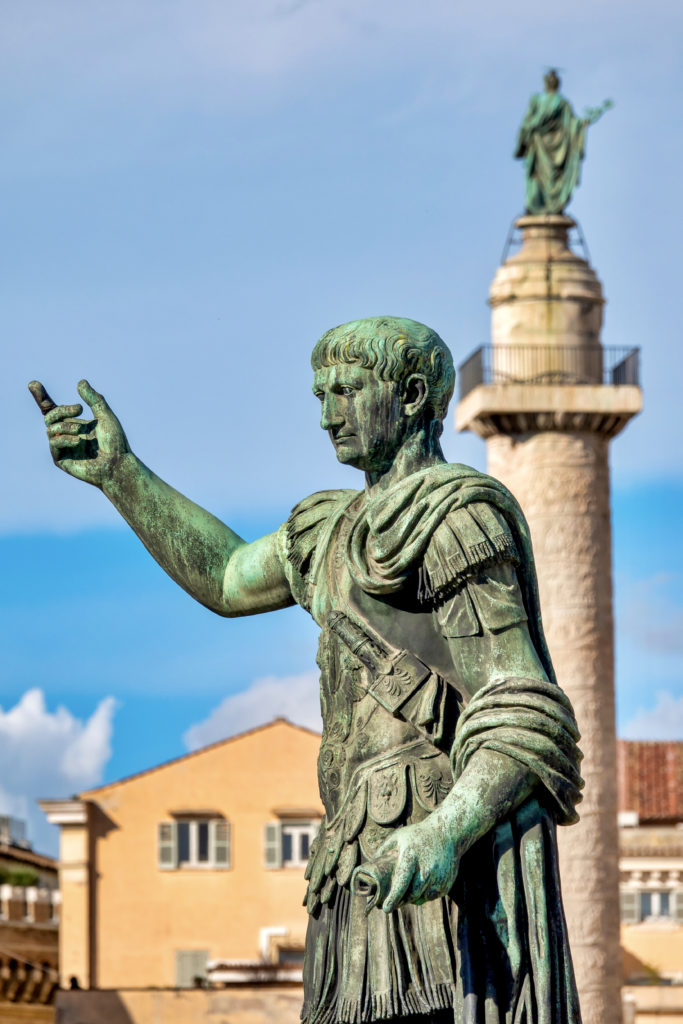
Via dei Fori Imperiali
Start your one day in Rome with a stroll down Via Dei Fori Imperiali, which is effectively an open air museum. It’s a large modern road that connects the Piazza Venezia with the Colosseum, crossing the Roman Forum in the process.
During your stroll, you’ll pass the Forum of Trajan, the Markets of Trajan, the Forum of Augustus, the Forum of Nerva, and other archaeological excavations in progress.
There are four statues of emperors with the ubiquitous Latin phrase SPQR, Senātus Populusque Rōmānus. The phrase translates to “The Roman Senate and People.”
This street can be crowded and full of trinket sellers. But it’s a great place to photograph the Colosseum, which is your next destination.
Colosseum
At the end of the Via Dei Fori Imperiali, you’ll arrive at the Colosseum. You need a pre-booked time slot reservation to see the most visited landmark in Italy. The Colosseum is the largest amphitheater of the ancient world. It’s the very symbol of the Roman Empire.
The word “Colosseum” is only a nickname. The formal name of this doughty edifice is the Flavian Amphitheater. Built by the Flavian emperors in the 1st century, the Colosseum has stood in Rome for almost 2,000 years.
Despite the ravages of time, the Colosseum is an incredibly well-preserved piece of Rome’s fascinating history and its brilliant engineering prowess.
The Colosseum embodies Ancient Rome, especially its lust for violence and entertainment. The gladiatorial games that took place in the Colosseum were a widely popular spectator sport.
As I mentioned in my list of imperial tours above, you can also book a tour that includes a visit to the “Hypogeum” or the Colosseum Underground, where the gladiators prepared for battle. For a different experience, you can also book a nighttime tour of the Colosseum.
Here’s my complete guide to visiting the Colosseum. It covers you everything you need to know to plan your Colosseum visit and purchase tickets.
I give you an overview of the remarkable history and construction of the Colosseum, the gladiatorial games that once entertained rabid Romans, and tell you everything you need to see inside the Colosseum.
Roman Forum
After visiting the Colosseum, head over to the Roman Forum. It’s right next door.
In this blissfully evocative heap of ruins, you’ll step back in time to the days of Julius Caesar, Augustus, Titus, and Constantine. You’ll weave your way past the ruins of Imperial Rome and through the tales, legends, and events of its great history.
The Roman Forum was the nerve center of Ancient Rome. It was the central civic space — the political, commercial, cultural, and religious center of Rome. It’s where Ancient Rome had its most important temples, churches, and halls of justice.
The Forum was the scene of political upheavals, funerals, and triumphant parades. Before the Colosseum was built, it even hosted gladiatorial battles. Roman citizens thought it was the center of the entire world.
Palatine Hill
The next stop on your 1 day in Imperial Rome itinerary is Palatine Hill. This is the most famous of Rome’s seven hills.
It’s Rome’s most ancient area, with a history that pre-dates Rome itself. Palatine Hill overlooks the Roman Forum to one side and Circus Maximus to the other.
The romantically dilapidated ruins you see atop the hill are the ruins of Domitian’s Palace. But there are so many more delights, even some active archaeological sites and secret underground places to explore.
Palatine Hill is home to many “new” S.U.P.E.R. Pass sites in Rome, like Domus Tiberiana and the House of Augustus. Some only recently opened after decades of excavation. New discoveries are made all the time.
Largo di Torre Argentina
When you’re done with the big three imperial sites, walk to the site of Julius Caesar’s assassination. The dictator was killed by a conspiracy of senators on the Ides of March in 44 B.C. at the Largo di Torre Argentina.
The senators feared Caesar would crown himself king. The assassination was one of the most pivotal moments of the Roman Republic.
What the assassins didn’t predict is that Caesar’s death would make him a martyr. It incited civil wars that led to the downfall of the republic and the rise of the Roman Empire.
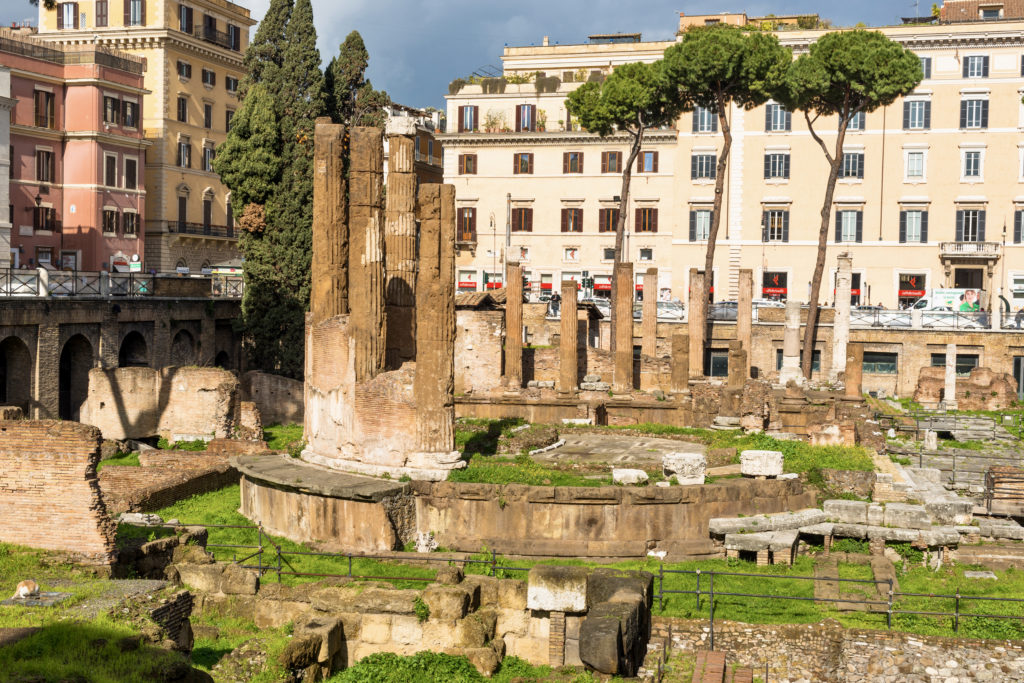
After a restoration funded by the fashion house Bulgari, the ruins of the Largo opened to the public in 2023. You can visit four Republican era pagan temples and the ruins of the Theater of Pompey via walkways at the site.
The theater was built in 55 B.C. by the great military general Pompey the Great. The curia (meeting house) of the theater was where the Roman senators met after they had outgrown the senate house in the Roman Forum.
There’s also a fenced off feral Cat Sanctuary onsite. It’s protected and funded by an animal protection organization.
>>> Click here to pre-book a ticket
Pantheon
In the evening of your 1 day in Rome itinerary, take a stroll through picturesque Central Rome. The streets of central Rome are safe and inviting for a walk at dusk. There’s no better way to feel the city’s pulse.
Centro storico is home to some of Rome’s top attractions. For Imperial ruin lusters, the one attraction you can’t miss is the magnificent Pantheon. It’s open until 7:15 pm.
Without a doubt, the Pantheon is the most famous and best preserved monument from ancient Rome. It’s the only piece of Imperial architecture left intact.
The Pantheon was a temple dedicated to all Roman deities. The Pantheon you see today was built by Emperor Hadrian. It likely served as a dynastic sanctuary, an assembly hall where the public could gather. Hadrian would have “held court” on a throne to oversee the public meetings.
Here’s my complete guide to the Pantheon. To see this ancient wonder, you’ll need to book a skip the line ticket or else wait in a long queue. You can also book a guided tour of the Pantheon.
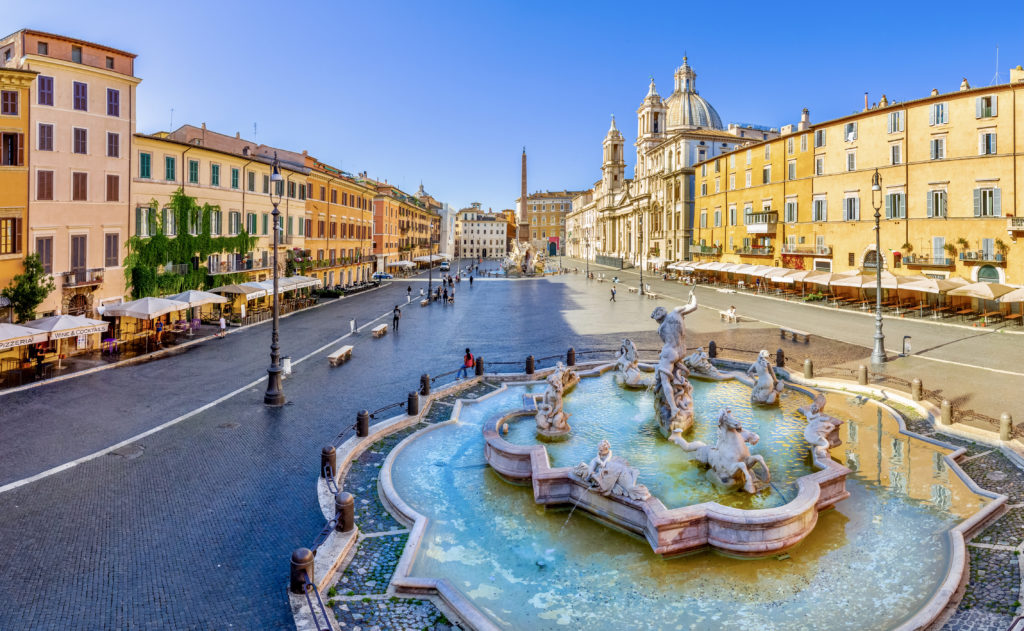
2. One Day Rome Itinerary: Centro Storico
If you’ve done the Imperial tour previously, perhaps you’d like to spend your 1 day in Rome exploring Central Rome. The Centro Storico is home to some of Rome’s most beloved sites and attractions.
Centro Storico is the most picturesque part of Rome. It’s a tangle of cobbled alleyways, Renaissance and Baroque monuments, ancient ruins, and pretty piazzas. This is the historic Rome that so many visitors come to see.
I’ve written a 1 day self-guided walking tour of Central Rome, so won’t repeat myself here. You can also book a guided 2.5 hour walking tour of central Rome.
My walking tour starts at the Vittorio Emmanuel II Monument in Piazza Venezia and ends at Piazza del Popolo. You can easily reverse the order and start at the Piazza del Popolo, if that’s closer to where you’re staying.
Along the way, you’ll see some of the most famous places in Rome. My guide takes you to 20 of the top attractions in Central Rome. It will keep you busy from the early morning to late evening.
3. One Day In Rome Itinerary: Vatican City
Have you visited the Vatican yet? You can easily spend an entire day in Rome just visiting Vatican City, a tiny country inside Rome. Even if you’re not religious, the Vatican is still a fascinating place with some of the best art on the planet.
The top must visit attractions in Vatican City are the Vatican Museums, St. Peter’s Square, St. Peter’s Basilica, and Castle Sant’Angelo. The Vatican Museums house 26 museums in total.
You could spend hours (or days!) admiring the Vatican Pinacoteca, Raphael Rooms, and Michelangelo’s frescos in the Sistine Chapel. Plus, there are plenty of hidden gems in the Vatican.
Since you’re only in Rome for 1 day, it may be best to book a guided tour to get through the place efficiently, especially if you’re a first timer. It’s just so massive.
Here are your Vatican tour options. You can pick a tour tailored to your own interests and museum going tastes.
- a 2.5 hour overview on a skip the line small group guided tour
- a 3 hour no wait tour that also includes the Raphael Rooms
- a 3.5 hour tour Vatican visit with a guided tour of St. Peter’s Basilica
- a 3 hour Friday night tour of the Vatican
- a Vatican tour that includes a climb of the dome of St. Peter’s Basilica
- a 2-3 hour private tour of the Vatican
If you’re taking a guided tour, you’ll access St. Peter’s Basilica from the back left corner of the Sistine Chapel. Once inside the basilica, you cannot re-enter the Vatican Museums.
When you’re done in the museums, head to the Bernini-designed St. Peter’s Square and St. Peter’s Basilica.
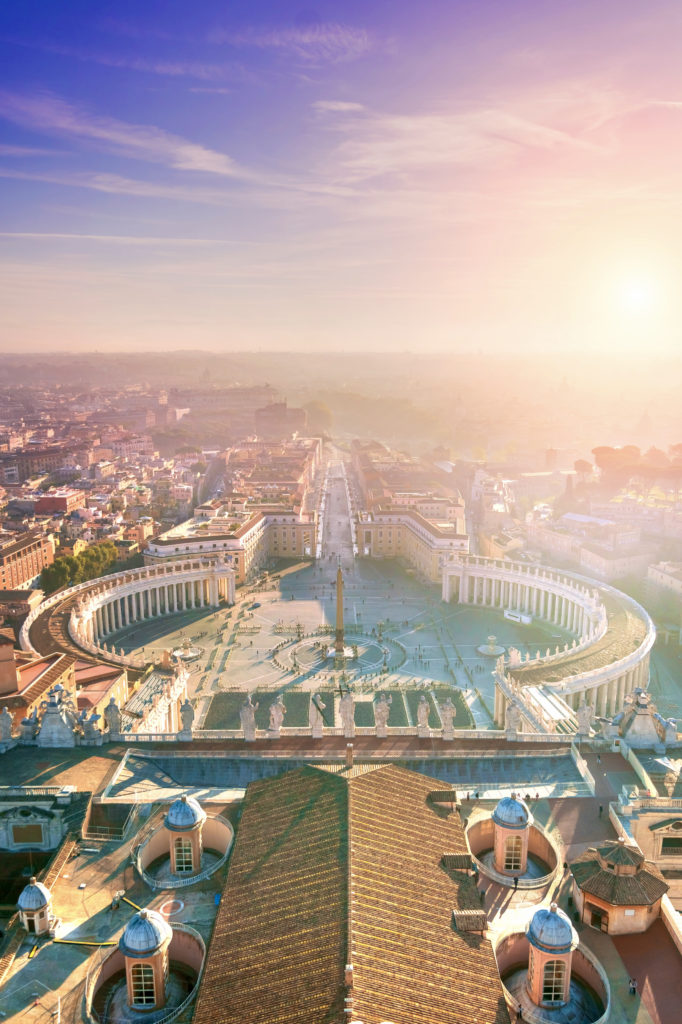
St. Peter’s Basilica is the world’s most famous church. Designed by Bramante, Raphael, and Michelangelo, it’s a true Renaissance masterpiece.
The basilica may be the most ornate space you’ve ever stepped foot inside. It’s filled with an intense visual array of precious treasures and grandiose decoration.
St. Peter’s was completed after 120+ years of construction, the reign of 18 different popes, incalculable cost, and the direction of 12 different architects. Measuring more than two football fields in length, it’s by far the largest church in Christendom.
Climbing up to the dome is a must do!
In Vatican City, you can also visit Castle Sant’Angelo. The fortress-like castle is a 2,000 year old landmark in Rome. It’s the former tomb of Emperor Hadrian and decorated in papal splendor.
The museum is stuffed with centuries of goodies most suitable for history buffs. It’s an eclectic collection — paintings, sculpture, military memorabilia, popes’ apartments, and a wonderful viewing terrace. To me, the frescoed ceilings and panoramic view from the top were the museum’s best features.
I’ve written a 1 day itinerary for Vatican City. It gives you an efficient hour by hour guide for visiting.
You’ll find useful tips for each Vatican attraction, a description of what to see at each attraction, and a primer on how to budget your time with only 1 day. I also give you suggestions on where to eat lunch and dinner.
Be forewarned, it’s difficult to spend an entire day in Vatican City without burnout or a dose of museum fatigue. The papacy is over 2,000 years old. Its haul of fine art masterpieces is staggering.
4. One Day In Rome Itinerary For Pilgrims
Rome is an important place of pilgrimage, particularly for Roman Catholics. The Vatican is the home of the Pope, the spiritual head of the Roman Catholic Church. The tombs of the apostles are also in Rome’s churches.
There are 4 papal basilicas in Rome. St. Peter’s Basilica is the only one in Vatican City. The other 3 are in Rome, receiving extraterritorial status under the Lateran Treaty. Each basilica has a set of Holy Doors that are opened for each Jubilee Year.
Altogether, there are 7 churches in Rome that are considered official pilgrim’s churches. But they’re spread out and you can’t do them all in one day in Rome. So, I’ve picked the 4 best churches that you can reasonably visit in 1 day in Rome, by taxi and by foot.
READ: Guide To Rome’s most Beautiful Churches
St. Peter’s Basilica
Begin your 1 day in pilgrim’s Rome at St. Peter’s Basilica. I’ve described the church above, so won’t repeat myself here. The basilica is the #1 pilgrimage destination in Rome.
Pilgrims come in the hope of seeing or hearing the Pope. The Pope speaks publicly on Wednesdays in Saint Peter’s Square and leads masses during the year.
Pilgrims can also visit what they believe to be the tomb of Saint Peter. It’s in the Vatican Necropolis under the basilica.
Here’s my complete guide to St. Peter’s Basilica. You can take a guided tour of St. Peters. You can also visit the underground grottos on a guided tour.
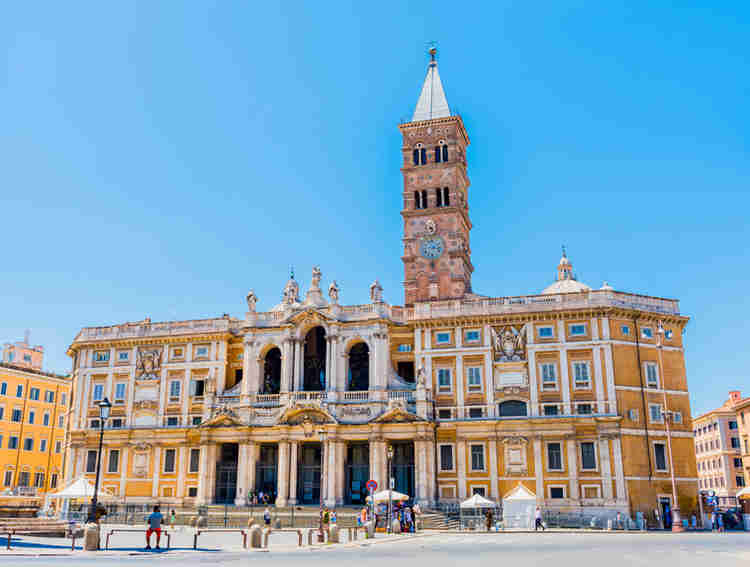
Santa Maria Maggiore
From St. Peter’s, taxi over to the Monti area of Rome to visit the magnificent Basilica of Santa Maria Maggiore. This UNESCO-listed basilica dates to the 5th century.
Santa Maria Maggiore is one of four papal basilicas in Rome and retains its original shape (with some embellishments).
The basilica was the scene of a miraculous snowfall in the middle of August in the 4th century, which is celebrated annually in a digitized show.
The basilica’s other claim to fame is a perfectly preserved Byzantine interior. Beautiful 5th century mosaics decorate both sides of the nave. 13th century mosaics are in the apse.
The basilica also has a stunning coffered ceiling, sculpted by Giuliano da Sangallo in 1450. It’s covered in gold, brought back by Columbus. And there’s a famed relic, five pieces of Jesus’ manger crib downstairs in the Confessio.
The church is renowned for its magnificent twin chapels, the Sistine Chapel and the Borghese Chapel. The Sistine Chapel has beautiful frescoes, a golden altar, a Bernini statue, and the tomb of Pope Sistus V.
The Borghese Chapel is lavishly decorated and frescoed. It holds one of Rome’s most famous icons, a painting of the Virgin and Child allegedly by Saint Luke, the first Christian painter.
Bernini fans can pay homage to him here, as his tomb is in the church. If you take a guided tour, you’ll get to see a secret spiral staircase designed by Bernini himself. The staircase is an architectural curiosity because there’s no central supporting rail.
Click here to book a guided tour of Santa Maria Maggiore.
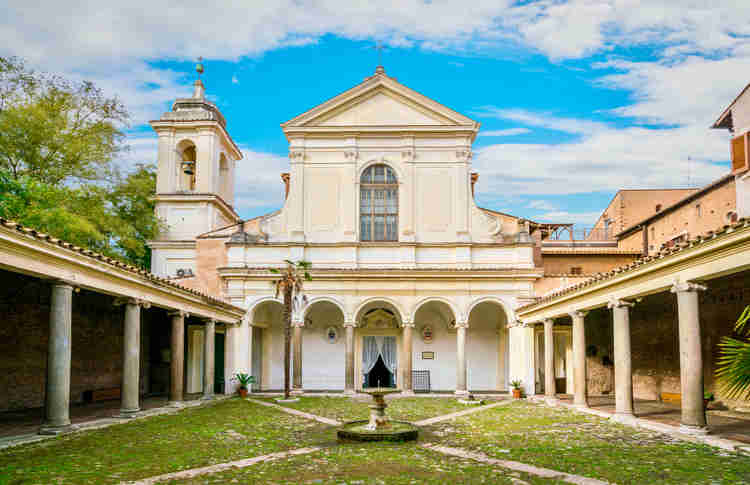
Basilica of San Clemente
It’s about a 15 minute walk from Santa Maria Maggiore to your next destination, the Basilica of San Clemente.
Along the way, you should pop into the Church of St. Peter in Chains. There, you can see one of Michelangelo’s most famous sculptures, Moses. It was part of his tomb for Pope Julius II.
The Basilica di San Clemente is an 11th century church, built atop a 4th century church, which was built atop an ancient Imperial residence. It’s a collage of different architectural styles.
Inside, you’ll see beautifully frescoed ceilings and original gold mosaics in the apse. But the real treasures lie beneath the inlaid marble floors. San Clemente is one of Rome’s best underground archaeological sites.
Underground, you’ll find layers of Christian history. There are early Christian wall mosaics, a 3rd century pagan temple, a 1st century residence, a secret Mithraic worship site, and the Cloaca Maxima (the sewer system of ancient Rome).
In the apse mosaic, Jesus hangs in the center on a cross studded with twelve doves, symbolizing the apostles. At the base, twelve sheep walk from miniature depictions of the walled cities of Jerusalem and Bethlehem.
You can book a 1 hour small group tour or a a 2.5 hour private tour.
St. John of Lateran & The Holy Stairs
It’s a 12 minute walk from San Clemente to your last stop of the day, the Basilica of St. John of Lateran. The Lateran is one of the four major basilicas under the jurisdiction of the pope. Until 1870, all the popes were crowned here. The church houses the tombs of six popes.
The Lateran was the first church established by the Emperor Constantine, who was the first Roman emperor to adopt Christianity as the state religion. Legend holds that Constantine dug the foundation with his bare hands.
A fire destroyed the basilica in 1308. But it was rebuilt by Pope Urban V. The architect Borromini gave the interior a Baroque facelift in the 17th century.
The rather bombastic facade was designed by Alessandro Galilei. It’s made entirely of travertine. On the top are 15 enormous statues of Jesus, saints, and the doctors of the church, created by the best sculptors of the era. In the vestibule is a massive statue of Constantine.
The nave was once a “forest of columns.” Fearing the roof would collapse, Borromini created piers instead. In each pier is a niche, holding sculptures of the apostles.
The floor is beautiful too. It’s from the 15th century, made of porphyry, serpentine, and granite. There’s also a golden apse mosaic, by Jacobi Torriti, from the 13th century.
The high altar were once used by Saint Peter himself. The baldachin has a 14th century gold canopy with the busts of Paul and Peter. It’s said that the heads of the apostles were actually once with it.
It’s worth it to pay a bit extra to see the 13th century cloister, created by the Cosmati Vassalletti brothers. The cloister has unique twisting double columns.
In the cloister you’ll find a beautiful funerary monument by Arnolfo di Cambio and the marble throne once used to crown popes.
Directly across the street from the basilica is another important stop for pilgrims — the Holy Stairs and Sandra Sanctorum.
These stairs (with just 28 steps) are renowned because Jesus allegedly climbed them during his passion. They were reputed to be the marble steps of the house of Pontius Pilate. They were brought back to Rome by Constantine’s mother, Helena.
At the top of the stairs is the Sancta Sanctorum. It was once the pope’s private and is decorated with gorgeous frescos.
>>> Click here to buy a ticket to the Lateran complex
5. One Day in Rome Itinerary For Art Lovers
Are you an art lover looking for a 1 day in Rome itinerary? If so, Rome is overflowing with amazing museums that you’ll fall in love with. You definitely can’t even scratch the surface with just one day in Rome.
But I will recommend 3 of the best museums in Rome to occupy your day. In the morning, head to the Capitoline Museums and the Borghese Gallery. Grab lunch and then head to the Vatican Museums for the afternoon.
If you’ve already visited the Vatican Museums, you can substitute the Palazzo Massimo (ancient sculpture and frescos), the Villa Giulia (Etruscan art), or MAXXI (modern art).
The museums are spread out. The Capitoline Museums are in Central Rome.
But you’ll have to take taxis to get to the Borghese Gallery and the Vatican Museums. Or have 40-45 minute walks. For this 1 day in Rome itinerary, I’d use the taxis to save precious time.
Capitoline Museums
Start your art-filled day in Rome at the Capitoline Museums. The museums sit atop a beautiful square, the Piazza dei Campidoglio on Capitoline Hill.
In the 16th century, Michelangelo re-designed the square, transforming it from pagan to papal. In the center is one of the world’s largest equestrian statues of Marcus Aurelius (the original is inside).
The Capitoline Museums are Rome’s oldest museum. The museums provide a unique up close look at Rome’s ancient imperial history. The Capitoline’s stash of ancient art and artifacts is unparalleled, albeit somewhat disorganized.
It’s housed in two buildings, the Palazzo dei Conservatori and the Palazzo Nuovo. They’re connected by an underground passageway, called the Underground Galleria Lapidaria, lined with evocative funereal steles.
Inside, you’ll find some of the world’s most famous ancient sculptures — Spinario, Bust of Commodus, Capitoline She Wolf, Medusa, and Dying Gaul.
Click here for a skip the line small group guided tour of the magnificent Capitoilne museums.
Borghese Gallery
Next up is the world renowned Borghese Gallery in northern Rome. You’ll need to pre-book time slot tickets well in advance.
Ah, this is one of the best small museums in the world! The Borghese Gallery houses one of the world’s most jaw dropping art collections in a chic and luxurious garden villa.
In the 17th century, Cardinal Scipione Borghese meticulously assembled the densely packed collection. It’s rich in ancient Roman, Renaissance, and Baroque art. It boasts major works by art superstars — Bernini, Titian, Caravaggio, Raphael, Rubens, and Canova.
In particular, the cardinal commissioned Gian Lorenzo Bernini — the Baroque “master of marble” — to create a series of sculptures that would become the pièce de résistance of his gilded sanctuary.
Bernini carved intensely charged bodies of mythological gods and heroes from massive slabs of marble. The most famous Borghese pieces are David, Apollo and Daphne, and The Rape of Persephone.
Be sure to linger in the Caravaggio Room, where you’ll find six of his paintings.This is the largest collection of Caravaggio in the world.
Click here to pre-purchase a Borghese Gallery ticket. You can also book a private tour of the museum, which is definitely worth the splurge.
After you’re done admiring the art, take a stroll in the Borghese gardens. This vast and verdant area is Rome’s equivalent to Central Park. On the grounds, you’ll also find the Villa Giulia, which houses Rome’s National Etruscan Museum.
Spend an hour there before taxing to the Vatican Museums.
Vatican Museums
The Vatican Museums are the public art and sculpture museums in the Vatican City complex. They’re housed in former wings of the Vatican Palace. Much of the work was collected by Pope Julius II, the imperious “warrior” pope who left a staggering legacy.
A museum path takes you through the long corridors and wings of the Vatican Museums.
Most of the fine art, as opposed to decorative art, is in the Vatican Pinacoteca (the painting gallery), the Pio-Clementino Museum (the sculpture gallery), the Gallery of the Candelabra (more sculpture), the Raphael Rooms, the Borgia Apartments, and the Sistine Chapel.
At the end of your long march down the museum path, you’ll arrive at the Sistine Chapel, the highlight of any Vatican visit. In 1508, Pope Julius II summoned Michelangelo from Florence to paint the ceiling of his private chapel.
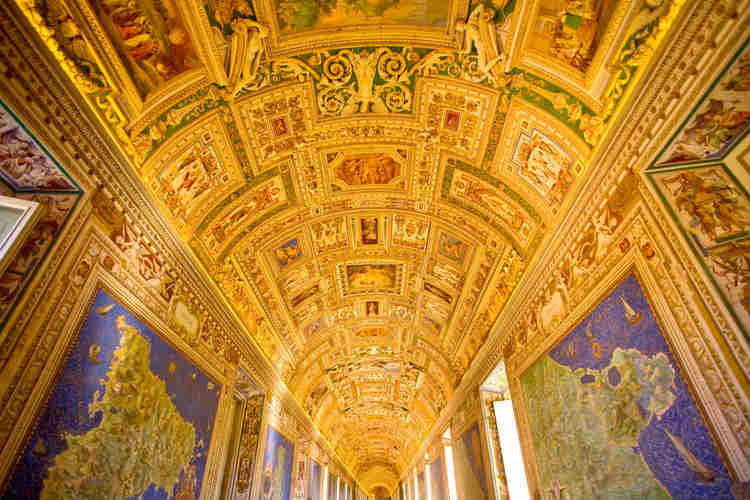
Michelangelo spent 4 years toiling away on the 9 ceiling panels. They depict scenes from Genesis and seem to open up the chapel to heaven. In 1534, he returned to paint The Last Judgment on the altar wall.
Artists came to study Michelangelo’s brilliant work. He directly influenced artists such as Andrea del Sarto, Correggio, Tintoretto, Annibale Carracci, Paolo Veronese, and El Greco.
Click here to pre-purchase a Vatican ticket, which is essential to skip what will otherwise be a long line. I also listed all the possible tours above.
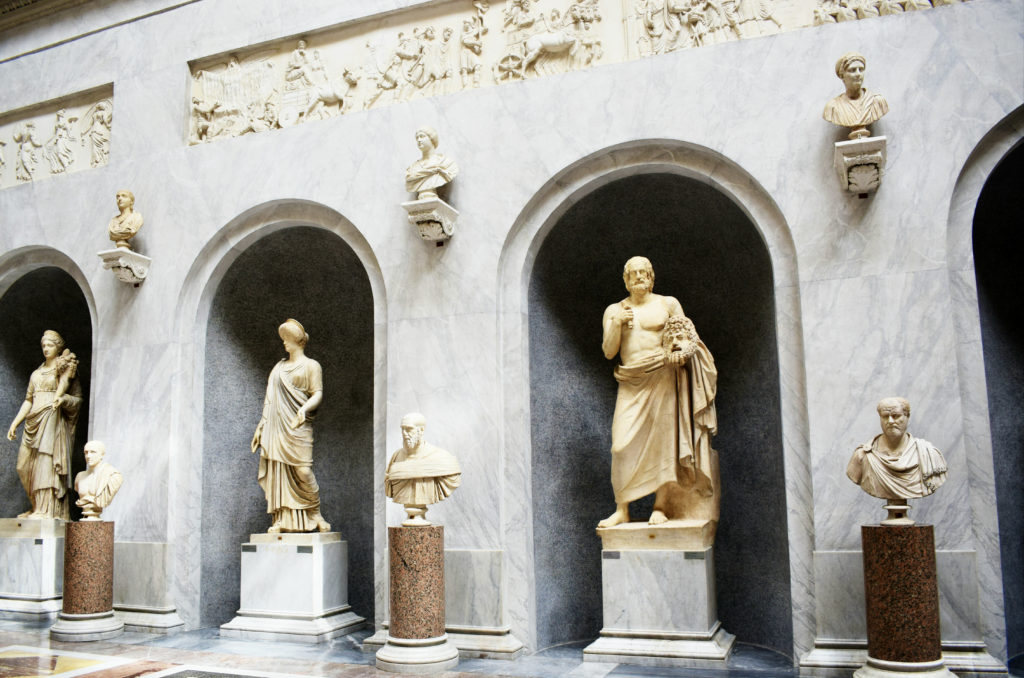
6. One Day In Off The Beaten Path Rome
Are you a repeat visitor to Rome looking for some 1 day in Rome itineraries? If so, perhaps you’d like to get off the beaten path in Rome and do some more unusual things.
Rome is overflowing with hidden gems that are off the typical tourist path. You’ll have plenty of options.
I’ve written a guide to Rome’s hidden gems. But I’ll just go over 4 of my favorite offbeat attractions for you to consider. In this 1 day in Rome itinerary, you begin on Palatine Hill, head to Piazza Venezia, and end in Trastevere.
House of Augustus
Start your day at the House of Augustus on Palatine Hill. You can book a guided tour to get the full scoop.
This was the primary home of Rome’s first emperor Augustus. It stands as a symbol of the transition of Rome from a republic to an imperial empire.
The site was only discovered in the 1950s. It opened in 2014 after decades of excavation. The house comprises two levels. It was arranged around two courtyards, linked by an open promenade.
The highlight of the House of Augustus is some of the best preserved Roman walls on the planet. They’re decorated with vibrant 2,000 year old frescos.
Most of the frescos are executed in the Second Pompeian Style, called the “Architectural Style.” It began in Pompeii, became the fashion, and was then adopted by Augustus.
By far the most elegant room is the Emperor’s Study, where Augustus burned the midnight oil.
Protected behind glass, the walls are beautifully decorated with stylized winged obelisks, gryphons, and floral elements. The colors are bold — green, black, green, and yellow.
Right next to the House of Augustus are the ruins of the “Hut of Romulus.” This may be the spot where Romulus, the founder of Rome, lived in the 8th century BC. Though most historians believe Romulus to be a purely legendary character.
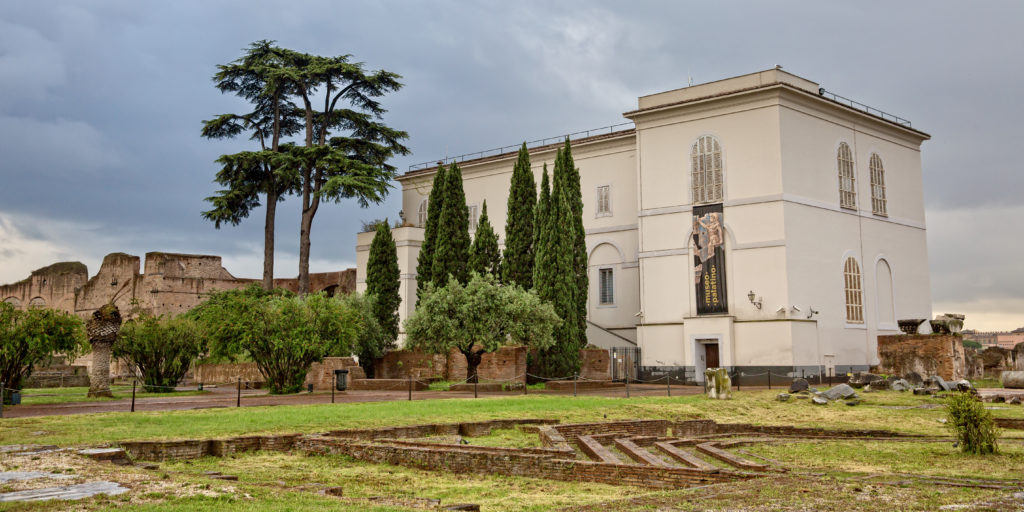
Palatine Museum
Next pop into the delightful Palatine Museum on Palatine Hill. It houses a treasure trove of ancient Roman ruins and artifacts discovered during excavations on Palatine Hill.
The works come from emperors’ palaces and aristocrats’ homes. You’ll find frescos, sculptures, mosaics, and other objects.
One of my favorite pieces was a rare bust of Emperor Nero, one of the most notorious Roman emperors. All likenesses of Nero were destroyed when the senate damned his memory. This bust is one of the few surviving relics of his time.
You’ll also find mosaics and exquisite paintings from Nero’s first palace, Domus Transitoria. And an interesting reconstruction of the Hut of Romulus that I mentioned above.
Palazzo Doria Pamphilj
When you’re done on Palatine Hill, stroll down the Via dei Fori Imperiali toward Piazza Venezia. The Palazzo Doria Pamphilj is right off the piazza on Via del Corso.
The museum is simply a joy to visit. It’s a heady blend of yesteryear in situ art and magnificent architecture, housed in a lavish 17th century Roman-Rococo palace.
The art collection was meticulously assembled and is still owned by a powerful Italian family, the Doria Pamphilj (pronounced Pom-fee-lee).
The Doria Pamphilj boasts over 650 works spanning the 15th to the 18th century, including pieces by Velazquez, Raphael, Bernini, Caravaggio, Titian, Carracci, and Bruegel.
The best works are stashed in the Aldobrandini Gallery and the Aldobrandini Hall.
The gallery’s emblematic painting is Diego Velazquez’s Portrait of Innocent X, which has a dedicated room. The museum also has a glittering Hall of Mirrors, reminiscent of the Palace of Versailles. Click here to pre-book a ticket.
If you have time before heading to your next stop, take a moment to inspect the Vittorio Emanuel II Monument in Piazza Venezia. In the back is an elevator that takes you to a terrace where you’ll have spectacular views of Rome.
Villa Farnesina
For your last stop on the 1 day hidden gems tour of Rome, head to Rome’s Trastevere neighborhood across the Tiber River to visit Villa Farnesina. It’s a 25 minute walk from the Palazzo Doria Pamphilj.
Designed by artist-architect Baldasarre Perruzi, the museum is a magnificent off the beaten path museum. It’s home to torrid love stories and secret Raphael paintings.
Between 1506-11, the wealthy banker Agostino Chigi from Siena built Villa Farnesina, then titled Villa Chigi. Chigi wanted a show-offy party pad to entertain Roman VIPs. He created a beautiful space, a Roman pleasure garden. It was bright, airy, and infused with Renaissance beauty.
The villa is decorated with racy mythological frescos by Renaissance painters Raphael, Baldassarre Peruzzi, and Sebastian del Piombo. Check out the Loggia of Cupid and Psyche, the Hall of Galatea, and the Room of the Perspectives.
The highlight is the Loggia of Cupid and Psyche, painted by Raphael and his workshop. The beautiful and animated frescos will take your breath away. Cavorting gods and goddesses cover every inch of the walls. The theme is “love conquers all.”
In the next room, the Hall of Galatea, you’ll find Raphael’s famous Triumph of Galatea. It was inspired by the Greek myth of the ill-fated lovers Acis and Galatea. Raphael captures the moment of Galatea apotheosis, when she is about to become divine.
Here’s my complete guide to visiting the Villa Farnesina. Click here for a guided tour of the lovely villa. Click here for a guided walking tour of the villa and the Trastevere neighborhood.
Since you’re in Trastevere, this is a great place to have dinner. Settle in for some wine at Enoteca Ferrara, which has a huge wine list. You can eat here too or try Ombre Rosse.
7. One Day In Rome Itinerary: Palaces
Are you addicted to palaces? Or just need a dash of royalty in your life? Rome fits the bill. The city’s elegant palazzi are art-filled oases minus the crowds.
Rome’s palace-museums are not on the typical tourist radar. You may have an aristocratic palace all to yourself.
These rarely visited Roman palazzos hide some of Rome’s unmissable masterpieces. The art is set amid dazzling rooms designed and decorated by Rome’s rich and famous. These palace museums could easily take up 1 day in Rome or more.
I’ve written a guide to Rome’s palace museums. I mentioned my favorite one above, the Palazzo Doria Pamphilj. So start your day there. Then, I recommend 3 other palaces to fill up your 1 day in Rome palace itinerary.
Palazzo Spada: Borromini Perspective Gallery
Palazzo Spada is in Central Rome. It’s about a 15 minute walk from Palazzo Doria Pamphilj.
The Renaissance palace is named after Cardinal Bernardino Spada. The cardinal purchased the palace in 1632. He hired famed architect Francesco Borromini to transform the building to beautiful effect.
There are three reasons to put the Palazzo Spada on your itinerary — the beautiful palace itself, the Borromini Perspective Gallery, and the precious collection of Artemisia Gentileschi and other Baroque paintings in the Galleria Spada.
The Borromini Gallery is a tromp l’ceil colonnade. Cardinal Spada was fascinated with perspective tricks that evoked unlimited and unreal spaces. In 1652, he hired Borromini to create his very own optical illusion, an architectural folly of sorts.
>>> Click here to book a ticket to Galleria Spada
Palazzo Massimo alle Terme: Ancient Roman Frescos
Palazzo Massimo is the best archaeological museum in Rome. It’s a 25 minute walk from Palazzo Spada.
The off the radar museum is one of Rome’s newer museum spaces, one of the five branches of the National Roman Museum. It’s housed in a magnificently restored building bursting with a wealth of fine sculptures, mosaics, and frescos.
Three galleries on the ground floor are dedicated to busts and statuary from the last years of the Roman Republic. The two most famous statues are of the Emperor Augustus and The Boxer.
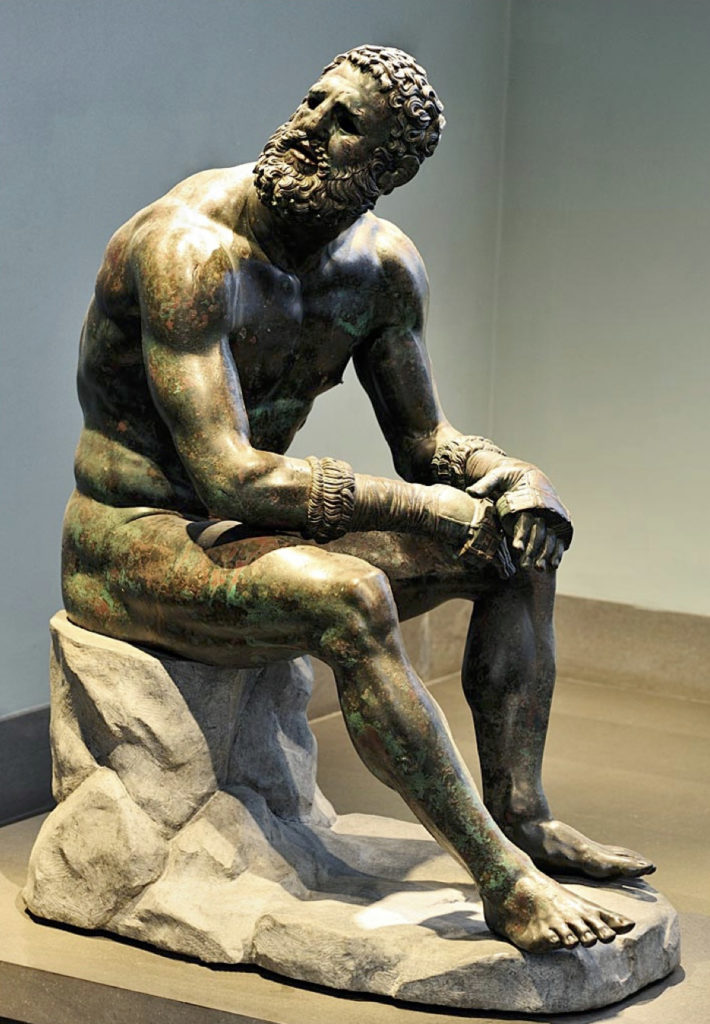
The Augustus statue is a beautiful, and incredibly detailed, statue of the Roman emperor. The Boxer was discovered on Quirinal Hill of Rome in 1885, near the ancient Baths of Constantine.
READ: Rome’s Best Ancient Ruins and Archaeological Sites
The museum’s real treat is a series of gorgeous domestic wall paintings in Room II on the second floor.
That room houses the exquisite garden frescos that were restored and removed from the House of Livia on Palatine Hill. Livia was the wife of Emperor Augustus.
Palazzo Barberini: Baroque Masterpieces
Palazzo Barberini is just a 10 minute walk from Palazzo Massimo. It houses one of Rome’s seriously underrated museums, the Galleria Nazionale d’Arte Antica. It’s an art lover’s art gallery.
Recent restorations give the museum an unapologetically grand wow factor. The museum holds some of Europe’s classic paintings by the great masters.
The Barberini Palace is 12,000 square meters and has 187 rooms. It has beautiful staircases by architects Borromini and Bernini.
The palace is home to one of Raphael’s most famous paintings, La Fornarina. It’s a painting of the “baker’s daughter.” Legend holds that Raphael fell in love with her while fresco painting in the Villa Farnesina.
Other master works include Caravaggio’s Narcissus and Judith and Holofernes, Holbein’s Henry VIII, and the magnificent ceiling fresco by Pietro da Cortona.
Cortona’s Triumph of Divine Providence is located in the largest and most important hall of Palazzo Barberini. There’s 400 square meters of decorated fresco.
The elaborate project was commissioned by Pope Urban VIII (Maffeo Barberini) in 1632, and finished by Cortona in 1639. Recliners allow you to lie back and take in the dramatic scene.
Click here for a skip the line entrance ticket. Click here for a 2 hour guided tour of the museum or here for a private tour.
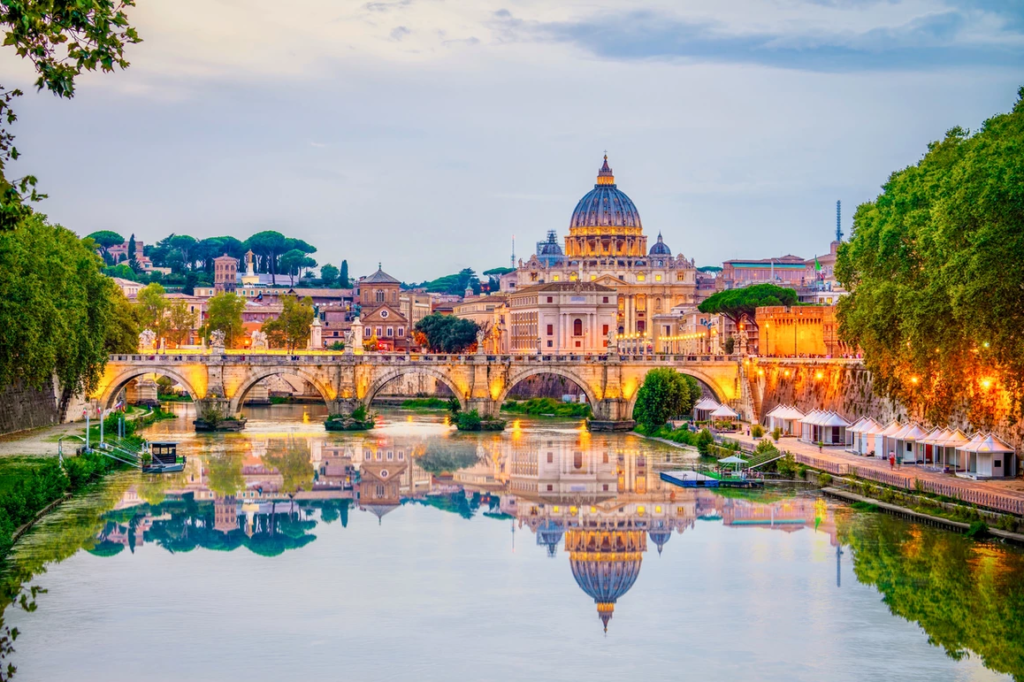
8. One Day In Rome: Gotta Do It All
You can’t see everything in Rome in 1 day. But you can sure try to see the main highlights. With some energy and pre-planning, you can have a go at it, get a taste of Rome, and then come back for more.
Here’s how to conquer Rome in one day. It’s a frantic itinerary. You’ll need pre-purchased timed entry tickets and tours to the Colosseum and the Vatican Museums. I gave you many options above.
Start at the Colosseum, which I’ve described above. Then, explore the Roman Forum with an audio guide. You’ll may have to skip Palatine Hill on this “gotta do it all” itinerary because there simply isn’t time.
After exploring the Roman Forum, head over to the temple-turned-church Pantheon. And take a peak at Piazza Navona, the most iconic square in Rome. Get a lunch to go and munch on it while admiring the gorgeous Bernini fountains in the piazza.
Then, taxi over to Vatican City. Follow my guide to visiting the Vatican set forth above.
Spend at least a half hour in St. Peter’s Basilica. Climb to the top of the St. Peter’s dome for an unforgettable view over St Peter’s Square near sunset. It closes at 6:00 pm.
Then, taxi back to the Campo dei Fiori or Trastevere area to find dinner.
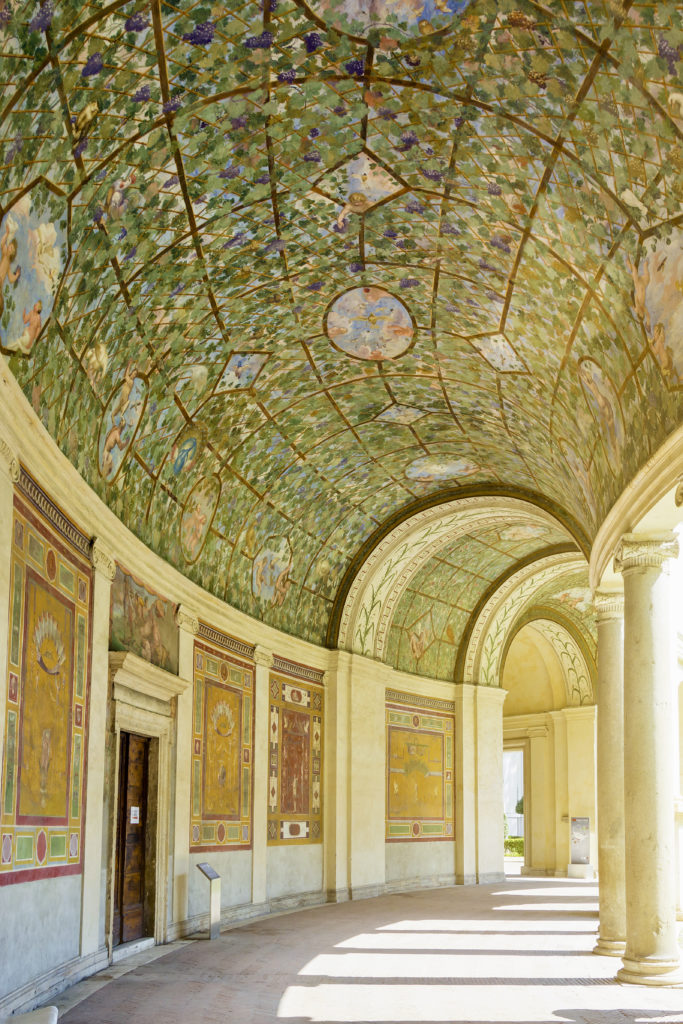
Where To Stay In Rome
If you’re a first timer in Rome, you may want to stay in the historic center around the Pantheon or Piazza Navona. Some good options are the Liberty Boutique Hotel, the Hotel Maalat, Deco Roma, or Hotel Hassler Roma.
If you want to stay near the Imperial ruins, Palazzo Manfredi (Colosseum views) and the Inn at The Roman Forum are good choices.
If you want to stay in the quieter Monti area, which makes a great base, the Palazzo Manfredi, Villa Spalletti Trivelli (Roman townhouse), and Roma Luxus (former 18th century palace) are fantastic choices.
One of my personal favorites is the Rome Cavalieri, which has its own art collection that you can tour with an art historian for free as a guest. You will also love the J.K. Place Roma, a simply gorgeous boutique hotel.
I hope you’ve enjoyed my themed one day in Rome itineraries. You may enjoy these other Rome and Italy travel guides:
- 3 day itinerary for Rome
- 5 day itinerary for Rome
- 10 Day itinerary for Italy’s Classic Cities
- 11 ways to spend 1 week in Italy
- 10 day itinerary from Milan to Rome
- 1 week itinerary from Venice to Milan
- 30 beautiful towns in Italy
- 100+ Italy bucket list experiences
- Tips for visiting Italy
- Historic landmarks in Italy
If you need one day in Rome itineraries, pin it for later.

